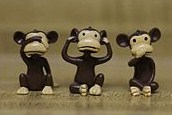From Lafuente’s Cancionero popular (1865):
Dicen que la reina inglesa
Tiene los cabellos rubios;
Y yo te digo: princesa,
Ningunos como los tuyos.
They’re not all like that, of course:
Vivan los cabellos rubios,
Vivan los rubios rubiales,
Y vivan los de mi niña,
Que son rubios naturales.
“Traditional” dress is to a considerable extent a 19th century invention born of cheap, good, chemical dyes, but when did the Spanish start giving their heads Bayer baths? Wonkypedia sez:
In ancient times, the dyes were obtained from plants.[13] Some of the most well known are henna (Lawsonia inermis), indigo, Cassia obovata, senna, turmeric and amla. Others include katam, black walnut hulls, red ochre and leeks.[14] In the 1661 book Eighteen Books of the Secrets of Art & Nature, various methods of coloring hair black, gold, green, red, yellow, and white are explained. The development of synthetic dyes for hair is traced to the 1860s discovery of the reactivity of PPD with air.[4]
So the first verse might be very contemporary indeed.
In my memory Zapatero’s first (?) cabinet consisted for the half of tall, emaciated blondes (f) in a country famous for its short, chubby brunettes, and he still got emancipation points. But maybe my memory is biased.
An (pre-industrial) anti-cosmetics item:
¿Con qué te lavas la cara,
Ojitos de palomita?
¿Con qué te lavas la cara,
Que la tienes tan bonita?¿Con qué te lavas la cara,
Que tan colorada estás?
– Me lavo con agua clara,
Y Dios pone lo demas.
Material for my organ grinding of a more sinister nature.
My encore has nothing to do with hair colouring but is a masterpiece which moreover invokes the (dreadful) Carlist Wars thus far:
Con esa mata de pelo
Y esa cara de sandunga
Tiene usted muertos más hombres,
Que tiene Isabel segunda.
The trope is however not new:
Con ese pié pulidito
Y ese modito de andar
Tiene usté más hombres muertos
Que arenas tiene la mar.
All grist for the mill.
Similar posts
Back soon

And they keep coming (excerpt):
And:
Or: